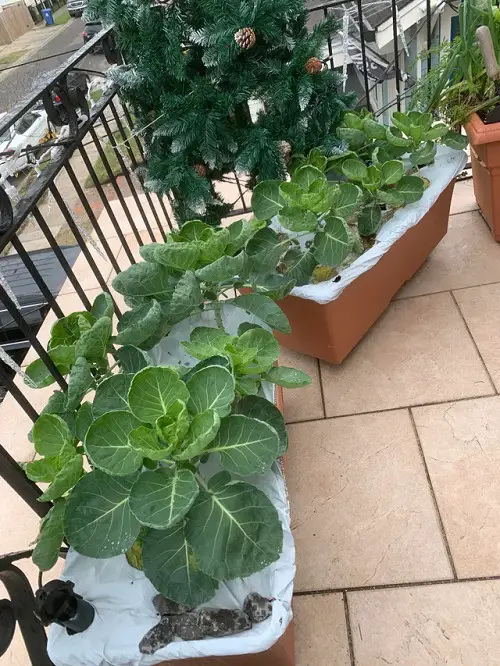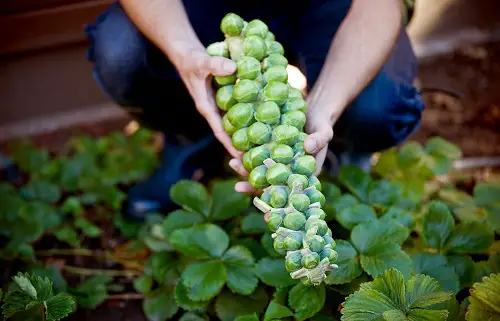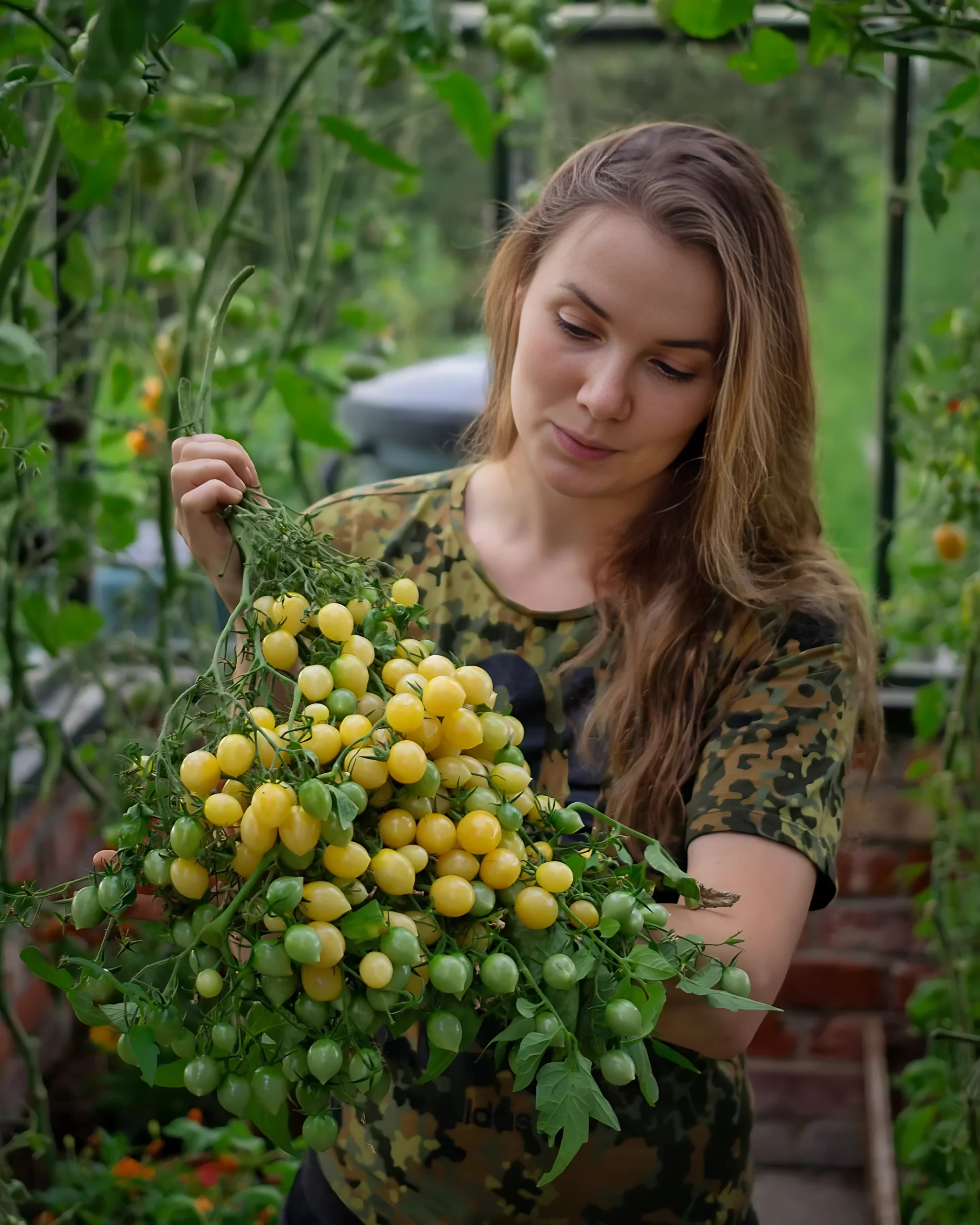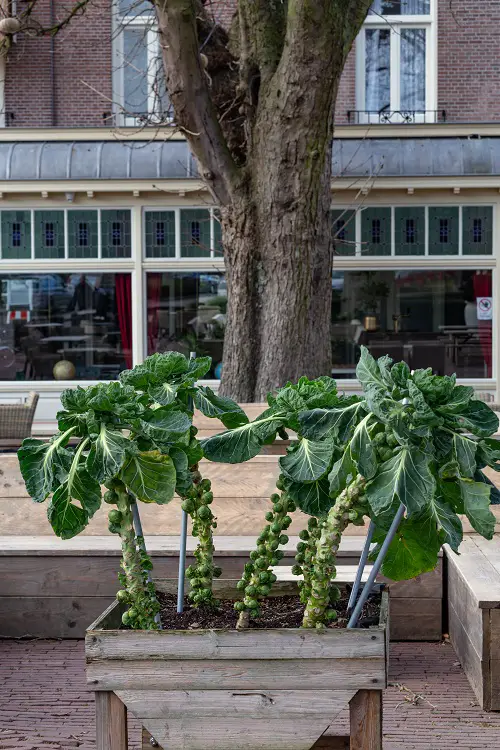Growing Brussels Sprouts in Containers is quite easy! Let’s have a look at How To Grow Brussels Sprout in a Pot!
Learn all the essential information on Growing Brussels Sprouts in Containers from this detailed guide below!
Learn all about growing sprouts easily at home here
Choosing a Pot
A standard 5-7 gallon planter, at least 10-12 inches deep and 12-14 inches in diameter, is suitable for growing Brussels sprouts in containers. You can grow one plant in such a pot.
To grow a couple of plants together, choose a minimum 15-gallon pot or one that is at least 18 inches in diameter. In a square foot of area, you can try to grow two plants.
Tip: Choose a clay pot to grow this vegetable if you’re growing it in a frost-free area, as clay pots remain cool, drain well, and provide good air circulation.
Want to grow Broccoli sprouts at home? Click here
Best Planting Time for Growing Brussels Sprouts
Brussels Sprout is picky about the growing conditions. It is a cool season crop and has the best taste when it matures in the cool air temperature.
Planting in early spring is ideal for regions with cool summers. In temperate and moderate climates, start growing Brussel sprouts from mid to late summer and early fall for the autumn and early winter harvest.
If you live in a frost-free climate with mild winters, fall and winter is the best time to start growing brussel sprout in pots to get a winter or spring harvest.
Growing Brussels Sprouts from Seeds
Start seeds in 4 inches pots or directly in the desired containers, either indoors or outdoors, depending on the temperature. For the germination of seeds, the soil temperature should be in the range of 45-85 F (7-30 C).
Sow seeds 1/2 inch deep and wait a few days for the baby plants to emerge, which usually takes 5-20 days. Once the seedlings have shown their first pair of leaves, thin them and save the healthiest ones only. And when these seedlings have grown a few inches (4-5 inches approximately), transplant them.
Pro Tip: You can also look for transplants in the nearby nursery if you miss sowing seeds on time or want readily available plants.
What do carrot sprouts look like? Learn here
Growing Brussels Sprout Indoors
Growing Brussels sprouts indoors is possible if you’ve got a spot that receives enough sunlight. They need at least 5-6 hours of direct sunlight.
How to Grow Brussels Sprouts in Pots?

Location
Choose a location that is sunny and has good air circulation to have productive plants. Although avoid the windy site for sure, otherwise the plants may fall over as Brussels sprouts are unstable plants due to their thin bases.
Also, the windy site affects the productivity of this vegetable.
Quick Tip: In warmer regions, keep this vegetable in a partially shaded spot.
Soil
Like other Cabbage family plants, Brussels sprouts do well in the slightly clayey growing medium as this helps in having firm roots.
Fill the pot with a quality potting mix that is well-draining, light, humus-rich, and slightly clayey. The soil pH should be neutral; add well-rotted manure to the soil when planting.
Tip: Cabbage family crops like Brussels sprouts are prone to Boron deficiency. You can look for symptoms like hollow stems, small sprouts, low productivity, slow growth, and dying growing tips. However, these symptoms are very common, so if soil testing is possible, do that. If you’re sure about Boron deficiency, apply borax. Learn more here!
Watering
Growing Brussels sprouts need evenly moist soil, so water regularly. It is important to prevent the drying of the soil in the period when the plant is maturing and at the time of head formation. Also, avoid overwatering.
Staking
Staking is important to keep Brussels sprouts growing in containers upright and prevent them from falling over, especially if the planting location is windy as they’re top-heavy plants.
Check out the best high-protein vegetables here
Brussels Sprout Care

Fertilizer
Brussels sprouts are heavy feeders, so mix well-rotted manure at the time of planting in the potting mix, and side dress the plants either with compost or manure.
When they’re half grown, apply fertilizer like 10-10-10 or 5-10-5, or 5-10-10 according to the instructions on the product. Alternatively, you can feed this vegetable crop with a liquid fertilizer every other week.
Mulching
You can skip mulching when you’re growing Brussels sprouts in containers. But doing this helps in keeping the soil cool and moist.
Pruning
Prune the lower leaves as you pick the matured sprouts from the bottom to help the plant divert its energy on becoming taller and developing more leaves and sprouts on the top.
Pests and Diseases
Since you’re growing Brussels sprout in a pot and using quality potting soil, don’t worry about soil-borne diseases like club root and fusarium wilt (yellows).
By providing good air circulation around the plant and avoiding overhead watering, you can prevent downy mildew and powdery mildew. Keep an eye on pests like aphids, thrips, cabbageworm, and flea beetles.
Harvesting Brussels Sprouts
Usually, the plant takes around 3-4 months after transplanting to reach the harvesting window, depending on the variety. Harvest the sprouts from the bottom as they mature earlier than the top ones, when they are 1 to 2 inches in diameter, looking firm and green.
Pick the sprouts by turning and twisting them carefully without damaging your brussels sprouts growing in containers.




New leaves and new sprouts will continue to grow as the plant gets taller. You can pick, or cut off individual sprouts when they get to a size you like. The sprouts at the bottom of the plant mature before the upper sprouts.